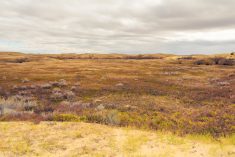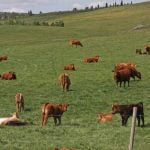Reuters — The current La Nina weather cycle is likely to transition into more neutral conditions by spring, a U.S. government weather forecaster said Thursday.
La Nina is characterized by unusually cold ocean temperatures in the equatorial Pacific Ocean and is linked with floods and droughts. It is the opposite phase of what is known as the El Nino Southern Oscillation (ENSO) cycle.
The National Weather Service’s Climate Prediction Center (CPC) in its monthly forecast pegged the chance of so called ENSO-neutral conditions at about 55 per cent during the March-May season.
Read Also

U.S. grains: Soybean futures inch higher on China trade optimism
U.S. soybean futures firmed on Wednesday as traders remained hopeful for progress in trade talks with top soy buyer China and on a Japanese proposal to increase U.S. soy purchases, deals that could help U.S. farmers avert major losses.
“La Nina is anticipated to continue affecting temperature and precipitation across the United States during the next few months,” the agency said.
The agency last month projected a 85 to 95 per cent chance of La Nina conditions persisting through the Northern Hemisphere winter.
La Nina emerged in 2016 for the first time since 2012, before fading in early 2017.
Typically less damaging than El Nino, La Nina tends to occur unpredictably every two to seven years.
During a La Nina year, winter temperatures are warmer than normal in the southeastern U.S. and cooler than normal in the northwest, according to the U.S. National Ocean Service.
The southwest typically sees drought conditions during a La Nina cycle as a high-pressure ridge prevents storms moving west from the Pacific to the states of New Mexico and Arizona.
According to Environment Canada, climatic anomalies known to take place during La Nina winters include above-average precipitation for British Columbia, Ontario and Quebec and colder-than-normal temperatures for the Prairies.
— Reporting for Reuters by Sumita Layek in Bangalore. Includes files from AGCanada.com Network staff.
















